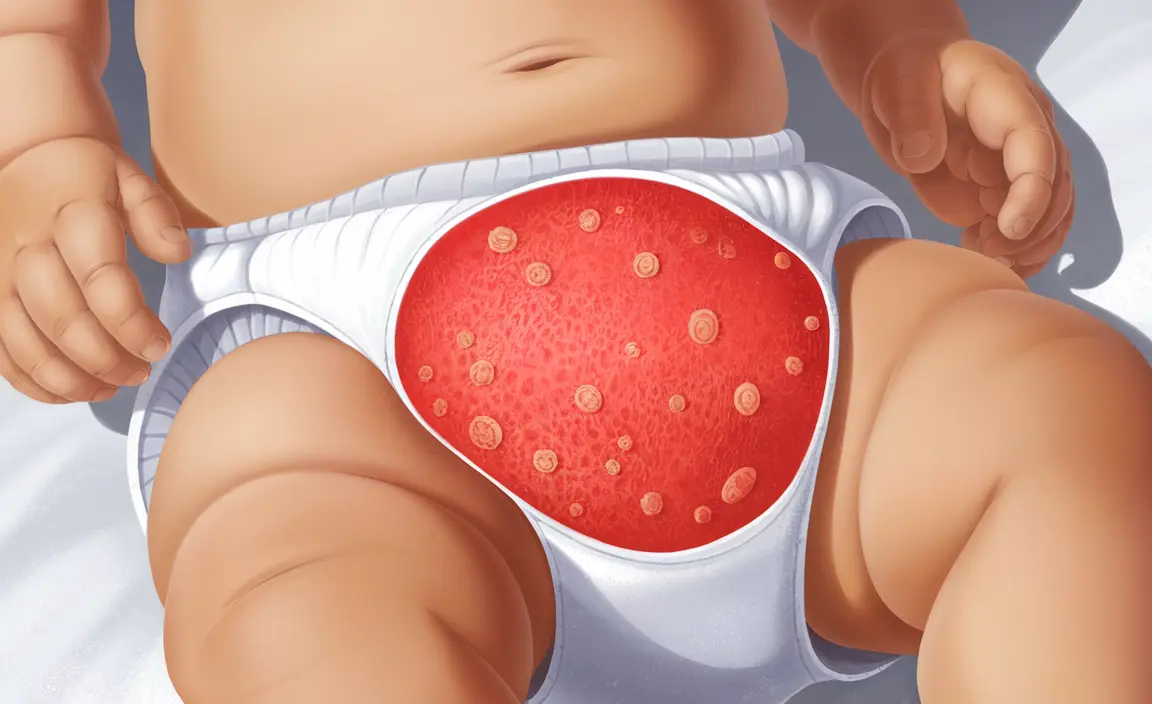As a parent, discovering your toddler has a yeast infection can be concerning. These common fungal infections, caused by an overgrowth of Candida yeast, can affect various parts of your toddler's body, particularly in warm, moist areas like the diaper region. Understanding the signs, causes, and treatment options is crucial for helping your little one feel better quickly.
While yeast infections in toddlers are generally not serious, they can cause discomfort and irritability. Early recognition and proper treatment are essential for your child's comfort and to prevent the infection from worsening or spreading.
Identifying Yeast Infections in Toddlers
Yeast infections in toddlers present with distinct characteristics that set them apart from regular diaper rash or other skin conditions. The most common signs include:
- Bright red, raised rash with defined borders
- Small red spots or pustules around the main rash (satellite lesions)
- Persistent rash that doesn't improve with regular diaper rash cream
- Unusual cracking or peeling of the skin
- Signs of discomfort, especially during diaper changes
Common Areas Affected by Yeast Infections
While the diaper area is most commonly affected, yeast infections can occur in other locations:
Diaper Region
The most frequent site of infection, characterized by redness and irritation in the folds of skin and surrounding areas.
Mouth (Oral Thrush)
Appears as white patches on the tongue and inside of cheeks that don't wipe away easily.
Skin Folds
Can develop in neck folds, armpits, and other areas where moisture tends to accumulate.
Treatment Options for Toddler Yeast Infections
Effective treatment typically involves a multi-faceted approach:
Antifungal Medications
- Over-the-counter antifungal creams
- Prescription-strength medications when necessary
- Oral medications for severe cases
Supportive Care Measures
Supporting the healing process includes:
- Frequent diaper changes
- Gentle cleaning with warm water
- Allowing the affected area to air dry
- Using barrier creams as recommended by your healthcare provider
Prevention Strategies
Several preventive measures can help reduce the risk of yeast infections:
- Change diapers promptly when wet or soiled
- Clean the diaper area thoroughly but gently
- Allow skin to dry completely before putting on a new diaper
- Use breathable diapers and loose-fitting clothes
- Consider probiotic supplements (with pediatrician approval)
Frequently Asked Questions
What are the common signs and symptoms of a yeast infection in toddlers? Common signs include a bright red rash with defined borders, small red spots around the main rash, persistent irritation, and signs of discomfort. The rash typically appears in warm, moist areas and may be accompanied by unusual skin changes.
How is a toddler yeast infection treated and what medications are commonly used? Treatment typically involves antifungal creams or ointments, either over-the-counter or prescription strength. For oral thrush, antifungal drops may be prescribed. Treatment should be combined with proper hygiene and keeping the affected area clean and dry.
Can a toddler yeast infection be mistaken for or worsen diaper rash? Yes, yeast infections can be mistaken for regular diaper rash, but they typically have more defined borders and satellite lesions. A yeast infection can also complicate an existing diaper rash, making it more severe and resistant to standard diaper rash treatments.
What causes yeast infections in toddlers and what increases the risk of getting one? Yeast infections are caused by an overgrowth of Candida fungus. Risk factors include prolonged wetness, tight clothing, antibiotics use, warm weather, and compromised immune systems. Poor hygiene or infrequent diaper changes can also increase risk.
How can I prevent yeast infections in my toddler, especially in the diaper area? Prevention involves maintaining good hygiene, changing diapers frequently, ensuring thorough drying after baths or diaper changes, using breathable diapers, and avoiding tight clothing. Some parents find that probiotic supplements help, but consult your pediatrician first.




